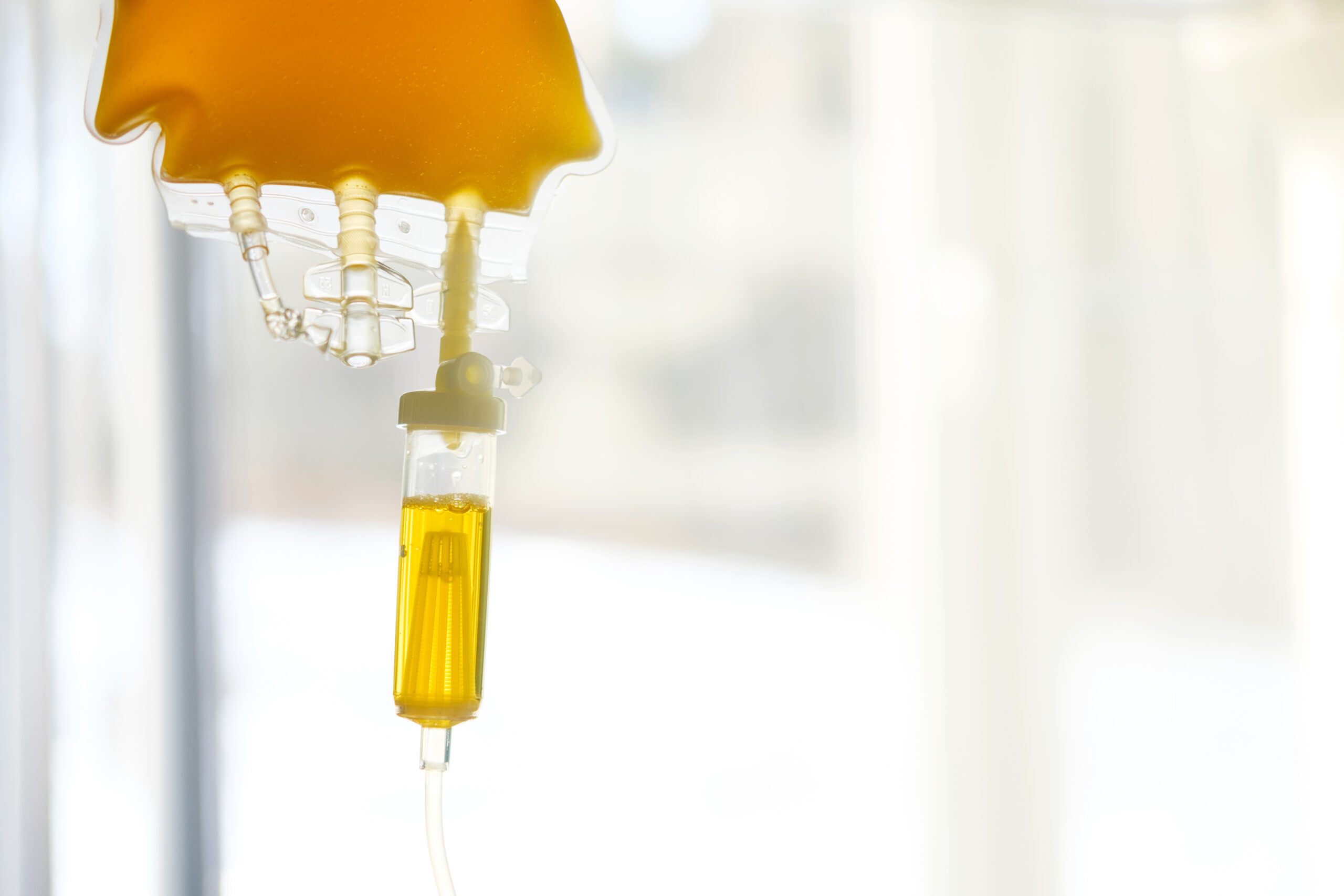
Airway Pressure Release Ventilation (APRV) Protocol
Important Notes
Mode is relatively contraindicated in:
- Severe COPD
- Severe Asthmatics
- If used in these patients the expiration phase of T-Low is likely required to be longer than average
This protocol incorporates APRV being a spontaneous breathing mode of ventilation allowing the patient to breathe on their own and incorporating this information in decision making for ventilator changes. In exceptional circumstances, some practitioners may incorporate this method without spontaneous breathing.
Rate: Consider a f of 10 (Cycle Time of 6 Seconds)
Initial Ventilator Settings:
P-High
- Set to 30 cm
- Note: Higher pressures are often needed and useful for patients with more profound hypoxemia and patients with morbid obesity. For example:
- Normal weight and crashing off 100% FiO2 onto APRV: set P-high to 30 cm.
- Morbid obesity and crashing off 100% FiO2 onto APRV: set P-high to 35 cm.
- Because of our COVID-19 Morbid obesity population higher P-high settings may be needed.
- Note: Higher pressures are often needed and useful for patients with more profound hypoxemia and patients with morbid obesity. For example:
P-Low
- Set to 5 cm (can consider 0 cm)
- Note, the overarching goal in the initial settings is to target tidal volumes in the range of 4-8cc/kg ideal body weight during the exhalation phase. This is largely accomplished by setting the T-Low. When T-low is set appropriately during exhalation the unstable alveoli do not collapse. However, since careful attention must be given to avoid excessive exhalation where alveoli close and then reopen on successive breathes causing atelectotrauma, setting a P-Low of 5, especially when first becoming familiar with APRV, can provide a margin of safety.
T-High
- With some ventilators, setting the T-Low automatically sets the T-High based upon the ventilator frequency and the cycle time. With others one must calculate the cycle time based upon the frequency, and then set the T-High. For example, dialing in a frequency of 10 bpm results in a cycle time of 6 seconds per breath. If the T-High must be set, one usually will initially set the T-High to 5.6 sec, and this results in a T-Low of 0.4 seconds. The Time-H /Time-L are manipulated to obtain a Vt of 4 – 8 mL/Kg Ideal Body Weight (NOT total body weight).
T-Low
- Set to 0.5 seconds initially. Normal range is 0.2-0.8 sec (up to 0.8 seconds normally only seen in patient populations such as COPD patients in which they require longer exhalation times). Set T-Low to target tidal volumes in the range of 4-8cc/kg ideal body weight. Ensure that mean airway pressures are maintained, and that excessive exhalation is not occurring leading to atelectotrauma.
FiO2
- Start at 100%, aggressively wean this down as fast as possible
Spontaneous breathing must be supported
- Drager or Puritan Bennett ventilators: make sure Automatic Tube Compensation (ATC) is turned on. This should provide a tailored amount of pressure designed to overcome the resistance of the endotracheal tube.
- Ventilators without automatic tube compensation: add pressure support of 5 cm. Do not increase past 5cm.
Initial Setting Goals:
- Allow acidemia to a pH of 7.15
- Allow hypercarbia if the pH is 7.15 or above
- Target a PaO2 of 55-80 (Note, a PaO2 correlates with a pulse oximetry reading of 85)
- If using pulse oximetry can target SpO2 of 88% – 93%
Initial Setting Adjustments to Achieve Goals:
Hypoxemia
- Increase T-High to within the range of 5.2-5.8. Increase T-High by 0.1 second intervals.
- If at a P-High of 35, one may consider increasing further. Intensivist consultation recommended.
- Morbidly obese patients may require higher P-High pressures to open their lungs. If at P-High of 30 in an obese patient increase P-High by 1-2 to a initial maximum of 35 cm.
Respiratory Acidosis
- Adjust T-Low within the range of 0.2-0.8 seconds. Increase T-Low by 0.1 intervals.
- Change P-low to 0 if on 5cm. Ensure maintenance of mean airway pressures and tidal volumes within 4-8cc/kg ideal body weight.
- If not spontaneously breathing, or breathing only minimally, decrease or eliminate sedation further.
- If continued difficultly switch to the 4 or 5 second interval methods below (equaling a f of 15 or 12 bpm) to allow for increased exhalation periods.
Weaning (Drop and Stretch Method)
- First wean the FiO2 to 60% (some practitioners target a FiO2 of 50%). Consider q1hr ABGs for the first 4 hours until the patient is stable and then ABGs q4-6hrs based upon clinical judgement and available resources.
- Next, decrease P-High by 1 cm to a target of 20cm. For every 1 cmH2O drop in P-High increase the T-High by 0.5 seconds. This is what is referenced in the name “drop and stretch.” For patients that are rapidly improving one can consider decreasing the P-High faster, dropping by 2 cm instead of 1, but still maintaining the corresponding increase in T-High by 0.5 seconds for every 1 cm decrease in P-High. Note that the T-Low time remains constant once initially set. However, if TVs fall outside the range of 4-8cc/kg the T-Low should be adjusted. Note: This only works when increasing the Time-High alters the frequency. Otherwise, the Time-Low must be altered for every change in Time-High.
Coming off APRV – Spontaneous Breathing Trials (SBT)
- Once a patient is on a P-High of 20 cm one can consider changing over to conventional modes of ventilation or going straight to a SBT
- If electing to go straight to a SBT, the spontaneous breathing trial can be performed as follows:
-
- Use pressure support mode with a PEEP of 10 cm and a pressure support (driving pressure) of 10 cm.
- Wean pressure support to 5 cm.
- Monitor the patient for ~30 minutes to 2 hours (to ensure there is no delayed de-recruitment).
- If the patient does well, extubate to BiPAP (e.g. 15 cm inspiratory pressure over 10 cm expiratory pressure).
- If the patient is unable to tolerate the trial, return them to their prior APRV setting.
- Consider further reducing the p-High down to within a range of 15-20 cm prior to attempting an SBT again.
- Alternatively, one can elect to wean the p-High down to a p-High as low as 10 (in morbidly obese patients this number can be as high as 15). On this setting you are basically on CPAP and can extubate directly off of APRV onto Bipap or HFNC.
Additional Notes
Patient Effort
- If capable (Hamilton G5) ensure that the ventilator displays the percent of minute ventilation being performed by the patient’s spontaneous breaths. If not capable this information can be assessed by taking the difference between the patient’s actual minute ventilation minus ventilator mandated minute ventilation (i.e. if the recorded minute ventilation is 8 liters a minute and the ventilator mandated minute ventilation is 4 liters a minute the patient is doing 50% work). This is a useful guide as to how the patient is progressing off the need for APRV treatment
- Initially, target ~10-30%
- As the patient progresses, they may be able to perform ~30-60% of the minute ventilation
- Initially, target ~10-30%
- If patient effort is less than the above, consider lightening the sedation to promote
- If the patient is contributing too much to the work of breathing, consider adding sedation if the patient is anxious/agitated.
- Consider increasing support level (e.g., increasing P-high and reducing T-high)
Minute ventilation
- Normal minute ventilation is roughly ~6-8 liters/minute
- Tracking minute ventilation over time may be an early indicator of a variety of challenges:
- If the minute ventilation is very low (e.g. <4 liters/minute), the patient is likely hypercapneic.
- If the minute ventilation is very high (e.g. >12 liters/minute), then the patient may be anxious or have increased dead-space ventilation (e.g. pulmonary embolism).
Cycle time of 5 Seconds ( f = 12 breaths per minute)
Initial Ventilator Settings
P-High
- 30 cm
- Note: Higher pressures are often needed and useful for patients with more profound hypoxemia and patients with morbid obesity. For example:
- Normal weight and crashing off 100% FiO2 onto APRV: set P-high to 30 cm.
- Morbid obesity and crashing off 100% FiO2 onto APRV: set P-high to 35 cm.
- Because of our COVID-19 Morbid obesity population higher P-high settings may be needed.
P-Low
- Set to 5cm (can consider 0cm)
- Note, the overarching goal in the initial settings is to target tidal volumes in the range of 4-8cc/kg ideal body weight during the exhalation phase. This is largely accomplished by setting the T-Low. When T-low is set appropriately during exhalation the unstable alveoli do not collapse. That said, since careful attention must be given to avoid excessive exhalation where alveoli close and then reopen on successive breathes causing atelectotrauma, setting a P-Low of 5, especially when first becoming familiar with APRV, can provide a margin of safety.
T-High
- With some ventilators, setting the T-Low automatically sets the T-High based upon the ventilator frequency and the Cycle Time. With others one must calculate the cycle time based upon the frequency, and then set the T-High. For example, Dialing in a frequency of 10 bpm results in a cycle time of 6 seconds per breath. If the T-High must be set, one usually will initially set the T-High to 4.6 sec, and this results in a T-Low of 0.4 seconds. The Time-H /Time-L are manipulated to obtain a Vt of 4 – 8 mL/Kg Ideal Body Weight (NOT total body weight)
T-Low
- Set to 0.5 seconds initially. Normal range is 0.2-0.8 sec (up to 0.8 seconds normally only seen in patient populations such as COPD patients in which they require longer exhalation times). Set T-Low to target tidal volumes in the range of 4-8cc/kg ideal body weight. Ensure that mean airway pressures are maintained, and that excessive exhalation is not occurring leading to atelectotrauma.
FiO2
- Start at 100%, aggressively wean this down as fast as possible
Spontaneous breathing must be supported
- Drager or Puritan Bennett ventilators: make sure Automatic Tube Compensation (ATC) is turned on. This should provide a tailored amount of pressure designed to overcome the resistance of the endotracheal tube.
- Ventilators without automatic tube compensation: add pressure support of 5 cm. Do not increase past 5cm.
Cycle time of 4 Seconds ( f = 15 breaths per minute)
Initial Ventilator Settings
P-High
- 30cm
- Note: Higher pressures are often needed and useful for patients with more profound hypoxemia and patients with morbid obesity. For example:
- Normal weight and crashing off 100% FiO2 onto APRV: set P-high to 30 cm.
- Morbid obesity and crashing off 100% FiO2 onto APRV: set P-high to 35 cm.
- Because of our COVID-19 Morbid obesity population higher P-high settings may be needed.
- Note: Higher pressures are often needed and useful for patients with more profound hypoxemia and patients with morbid obesity. For example:
P-Low
- Set to 5 cm (can consider 0 cm)
- Note, the overarching goal in the initial settings is to target tidal volumes in the range of 4-8cc/kg ideal body weight during the exhalation phase. This is largely accomplished by setting the T-Low. When T-low is set appropriately during exhalation the unstable alveoli do not collapse. That said, since careful attention must be given to avoid excessive exhalation where alveoli close and then reopen on successive breathes causing atelectotrauma, setting a P-Low of 5, especially when first becoming familiar with APRV, can provide a margin of safety.
T-High
- With some ventilators, setting the T-Low automatically sets the T-High based upon the ventilator frequency and the Cycle Time. With others one must calculate the cycle time based upon the frequency, and then set the T-High. For example, dialing in a frequency of 10 bpm results in a cycle time of 6 seconds per breath. If the T-High must be set, one usually will initially set the T-High to 3.6 sec, and this results in a T-Low of 0.4 seconds. The Time-H /Time-L are manipulated to obtain a Vt of 4 – 8 mL/Kg Ideal Body Weight (NOT total body weight).
T-Low
- Set to 0.5 seconds initially. Normal range is 0.2-0.8 sec (up to 0.8 seconds normally only seen in patient populations such as COPD patients in which they require longer exhalation times). Set T-Low to target tidal volumes in the range of 4-8cc/kg ideal body weight. Ensure that mean airway pressures are maintained, and that excessive exhalation is not occurring leading to atelectotrauma.
FiO2
- Start at 100%, aggressively wean this down as fast as possible
Spontaneous breathing must be supported
- Drager or Puritan Bennett ventilators: make sure Automatic Tube Compensation (ATC) is turned on. This should provide a tailored amount of pressure designed to overcome the resistance of the endotracheal tube.
- Ventilators without automatic tube compensation: add pressure support of 5 cm. Do not increase past 5cm.




